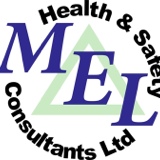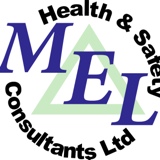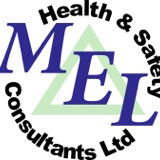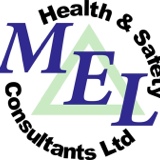Information
-
Company
-
Prepared by
-
Conducted on
Part 1: GENERAL INFORMATION
The responsible person for fire safety
-
Name of the responsible person:
-
Address of Property:
-
Person(s) Consulted:
-
Assessor:
-
Date of Fire Risk Assessment:
-
Date of Previous Fire Risk Assessment:
-
Suggested Date for Review:
The Building
-
Number of Floors
- 1
- 2
- 3
- 4
- 5
- 6
- 7
- 8
- 9
- 10
-
Floor area (approximate): (m2 per floor)
-
Floor area (approximate): (m2 total)
-
Brief details of construction:
-
Occupancy type:
-
Area to which this risk assessment is valid:
The occupants (of the area assessed)
-
Maximum number of occupants:
-
Maximum number of occupants at any given time:
-
Maximum number of members of the public at one time:
-
Sleeping Occupants
-
KEY
Y- Acceptable N- Unacceptable N/A- Not Applicable
Occupants at special risk in assessed or adjacent area
-
Are all personnel able bodied and able to evacuate unaided in an emergency? Consider disabled and visual, hearing impairments.
-
Are occupants restricted from working in remote areas?
-
Are occupants prevented from working alone on the premises?
Previous Fire loss experience
-
Has the premises remained free of any fire loss experiences in the past?
Other relevant Information e.g. Hazardous operations that increase risk
-
Detail other relevant information e.g. Hazardous operations that increase risk
Part 2: FIRE HAZARDS AND ELIMINATION OR CONTROL
Electrical sources of ignition
-
Are reasonable measures taken to prevent fires of electrical origin?
-
Is the fixed wiring installation periodically tested and inspected?
-
Are portable appliances tested/inspected?
-
Is there a suitable policy about the use of personal electrical appliances?
-
Is there a suitable limitation on the use of trailing leads and adapters?
Smoking
-
Are electrical cupboards locked to prevent unauthorised admittance?
-
Are reasonable measures taken to prevent fires as a result of smoking?
-
Is the prohibition of smoking enforced in the buildings?
-
Is smoking prohibited in high risk areas? E.g. LPG stores etc
-
Are there suitable arrangements made for those who wish to smoke?
-
Is there absence of any evidence of breaches of smoking policy?
-
Is the appropriate smoking prohibition notice displayed at the building's entrance?
Arson
-
Are waste & combustibles stored away from the structure?
-
Is security adequate in order to reduce the risk of arson?
Portable heaters and heating installation
-
Is the use of portable heaters avoided as far as reasonably practicable?
-
If hazardous types of heaters are used, are the more hazardous types (radiant bars and LPG) avoided?
-
If portable heaters are used are suitable measures taken to minimise the risk of ignition of combustible materials?
-
Are boilers & the gas heating system serviced regularly?
Cooking facilities
-
Are reasonable measures taken to prevent cooking fires?
-
Are filters changed and ductwork cleaned regularly?
-
Are suitable extinguishers available?
Lightning
-
Does the building have lightning protection system if required? (if yes has it been tested and are records of testing kept)
Other significant ignition sources that warrant consideration
-
List other ignition sources:
Housekeeping
-
Is the standard of housekeeping adequate?
-
Are combustible materials separated from ignition sources?
-
Is there appropriate storage of flammable materials?
-
Is the storage of combustibles & waste kept to a minimum to reduce risk?
Hazards introduced by contractors and building works
-
Is there sufficient control over works by contractors (e.g. Permits to work & hot works permits)?
-
Are there arrangements for the safe storage of gas bottles and others hazardous materials
-
Are fire safety conditions and instructions communicated to contractors & monitored?
Part 3: FIRE PROTECTION MEASURES
Means of escape
-
Is the building provided with adequate means of escape in case of fire?
-
Is there an adequate number of exits?
-
Are exit doors able to be opened easily in an emergency? E.g. Push bar
-
Do fire exits open in the direction of travel where necessary?
-
Have sliding or revolving doors been avoided as fire exits?
-
Are routes free of trip hazards e.g. Loose carpets & steps
-
Are there reasonable distances of travel where there is a single direction of travel?
-
Are there reasonable distances of travel where there are alternative means of escape?
-
Do escape routes provide fire rating?
-
Do all inner rooms provide adequate fire protection rating as required?
-
Are escape routes & doors unobstructed & not blocked?
-
Are there suitable means of escape for disabled occupants?
-
Are there self-closing fire door mechanisms in place?
-
Where required as an emergency exit, are staircases safe & without risk?
Measures to limit fire spread and development.
-
Are fixtures, fittings & furniture that promote the spread of fire avoided?
-
Are linings & furnishings that promote fire spread avoided as far as reasonably practicable?
Escape lighting
-
Is there a reasonable standard of escape lighting provided?
Fire safety signs and notices
-
Are fire safety signs suitable and sufficient?
-
Are small blue "Fire Door Keep Shut" or "Fire Door Keep Locked" (on electrical cupboards) signs/tags fitted to fire doors on both sides at eye level?
-
Are fire alarm call point notices over all break glass points to further highlight their location?
-
Are "Fire Action Plan" notices displayed in specific locations?
-
Are fire extinguisher point notices displayed?
-
Is the fire plan displayed on the notice board, showing exits, extinguishers & names of fire Marshall's?
Means of giving warning in the event of fire
-
Is a manually operated electrical fire alarm system provided?
-
Is automatic fire detection provided?
-
Is there remote transmission of alarm signals?
-
Are there smoke alarms where required?
Manual fire extinguishing appliances
-
Is there suitable and sufficient provision of portable fire extinguishers?
-
Are hose reels provided?
Relevant automatic fire extinguishing systems
-
Type of system:
-
Comments and observations:
Other relevant fixed systems
-
Type of system
Part 4: MANAGEMENT OF FIRE SAFETY
Procedures and arrangements
-
Person responsible for fire safety:
-
Are there competent persons available to assist in implementing fire safety arrangements?
-
Are appropriate fire procedures in place? (including arrangements for calling the fire service)
-
Are plans of floor layouts & location of hazards available as an aid to the fire services?
-
Is there a Fire Emergency Plan in place and details recorded?
-
Does the plan take account of other Fire Emergency Plans applicable in the building?
-
Is the Fire Emergency Plan readily available for staff to read?
-
Are there competent persons nominated to respond to fire?
-
Are persons nominated to assist with evacuation? E.g. Disabled
-
Is there appropriate liaison with the fire service?
-
Do routine in-house inspections of fire precautions take place?
-
Has a safe assembly point been allocated and does it display an appropriate sign?
-
Is there a roll-coll of building occupants after evacuation?
Training and drills
-
Are staff given instruction on induction?
-
Have staff with special responsibilities been given appropriate training?
-
Do staff receive periodic refresher training at suitable intervals?
-
Are fire drills carried out at appropriate intervals?
Testing and maintenance
-
Is the workplace adequately maintained?
-
Is there weekly testing and periodic servicing of the fire detection and alarm system?
-
Is there monthly, six-monthly and annual testing of the emergency lighting?
-
Is there annual maintenance and testing of fire extinguishing equipment?
-
Is there annual inspection and test of the lightning protection system?
-
Is there six monthly and annual testing of wet/dry risers?
-
Is there weekly testing and periodic inspection of sprinkler installations?
-
Are there routine checks of fire doors and final exit doors?
-
Are there yearly tests on gas systems & boilers by a competent person?
-
Other relevant inspection and test
Records
-
Are there records of fire drills?
-
Are there records of fire training?
-
Are there records of fire alarm tests?
-
Are there records of emergency lighting tests?
-
Are there records of maintenance and testing of other fire protection systems?
Part 5: RISK RATING AND RECOMMENDATIONS
Risk Items
-
Item 1
-
Recommendations
-
Risk Rating
- High
- Medium
- Low
-
Priority
- A immediate actions required or remedial measures put in place to control risk in the meantime
- B) Action required in the short term but within 3 months
- C) Action required in the longer term but within 6 months
- D) Advisory, no immediate action necessary. For information, or long term action as appropriate, or should be considered as best practice and implemented when time and resources allow.
-
Action
-
Item 2
-
Recommendations
-
Risk Rating
- High
- Medium
- Low
-
Priority
- A immediate actions required or remedial measures put in place to control risk in the meantime
- B) Action required in the short term but within 3 months
- C) Action required in the longer term but within 6 months
- D) Advisory, no immediate action necessary. For information, or long term action as appropriate, or should be considered as best practice and implemented when time and resources allow.
-
Action
-
Item 3
-
Recommendations
-
Risk Rating
- High
- Medium
- Low
-
Priority
- A immediate actions required or remedial measures put in place to control risk in the meantime
- B) Action required in the short term but within 3 months
- C) Action required in the longer term but within 6 months
- D) Advisory, no immediate action necessary. For information, or long term action as appropriate, or should be considered as best practice and implemented when time and resources allow.
-
Action
-
Item 4
-
Recommendations
-
Risk Rating
- High
- Medium
- Low
-
Priority
- A immediate actions required or remedial measures put in place to control risk in the meantime
- B) Action required in the short term but within 3 months
- C) Action required in the longer term but within 6 months
- D) Advisory, no immediate action necessary. For information, or long term action as appropriate, or should be considered as best practice and implemented when time and resources allow.
-
Action
-
Item 5
-
Recommendations
-
Risk Rating
- High
- Medium
- Low
-
Priority
- A immediate actions required or remedial measures put in place to control risk in the meantime
- B) Action required in the short term but within 3 months
- C) Action required in the longer term but within 6 months
- D) Advisory, no immediate action necessary. For information, or long term action as appropriate, or should be considered as best practice and implemented when time and resources allow.
-
Action
-
Item 6
-
Recommendations
-
Risk Rating
- High
- Medium
- Low
-
Priority
- A immediate actions required or remedial measures put in place to control risk in the meantime
- B) Action required in the short term but within 3 months
- C) Action required in the longer term but within 6 months
- D) Advisory, no immediate action necessary. For information, or long term action as appropriate, or should be considered as best practice and implemented when time and resources allow.
-
Action
-
Item 7
-
Recommendations
-
Risk Rating
- High
- Medium
- Low
-
Priority
- A immediate actions required or remedial measures put in place to control risk in the meantime
- B) Action required in the short term but within 3 months
- C) Action required in the longer term but within 6 months
- D) Advisory, no immediate action necessary. For information, or long term action as appropriate, or should be considered as best practice and implemented when time and resources allow.
-
Action
-
Item 8
-
Recommendations
-
Risk Rating
- High
- Medium
- Low
-
Priority
- A immediate actions required or remedial measures put in place to control risk in the meantime
- B) Action required in the short term but within 3 months
- C) Action required in the longer term but within 6 months
- D) Advisory, no immediate action necessary. For information, or long term action as appropriate, or should be considered as best practice and implemented when time and resources allow.
-
Action
-
Item 9
-
Recommendations
-
Risk Rating
- High
- Medium
- Low
-
Priority
- A immediate actions required or remedial measures put in place to control risk in the meantime
- B) Action required in the short term but within 3 months
- C) Action required in the longer term but within 6 months
- D) Advisory, no immediate action necessary. For information, or long term action as appropriate, or should be considered as best practice and implemented when time and resources allow.
-
Action
-
Item 10
-
Recommendations
-
Risk Rating
- High
- Medium
- Low
-
Priority
- A immediate actions required or remedial measures put in place to control risk in the meantime
- B) Action required in the short term but within 3 months
- C) Action required in the longer term but within 6 months
- D) Advisory, no immediate action necessary. For information, or long term action as appropriate, or should be considered as best practice and implemented when time and resources allow.
-
Action
-
Received by responsible person / representative
-
Assessor Signature
-
Pictures
-
Priority
- A immediate actions required or remedial measures put in place to control risk in the meantime
- B) Action required in the short term but within 3 months
- C) Action required in the longer term but within 6 months
- D) Advisory, no immediate action necessary. For information, or long term action as appropriate, or should be considered as best practice and implemented when time and resources allow.
Re-Assessment
-
Recommended date for re-assessment










